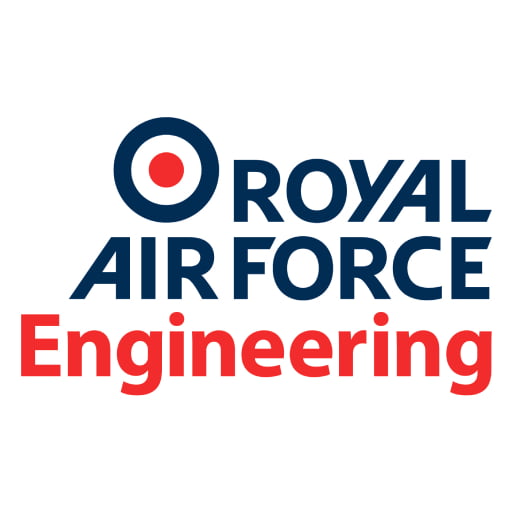Your Ultimate Guide to a Career in Supply Chain & Logistics
Are you great at planning ahead? Do you make sure everything runs smoothly? Can you think on your feet if a disruption to the status quo occurs?
Logistics and distribution is the name given to managing and transporting goods or materials in the supply chain. It is an umbrella term that covers a vast industry and encompasses supply chain roles, warehouse automation and operations, among others.
Search for Logistics Apprenticeships
The basics
Apprenticeships across the supply chain are a great way to learn and gain experience in an exciting, fast-paced field.
These apprenticeships give you the chance to learn by doing, and also to study all of the important things you need to know about your day-to-day role. You’ll get to work on real projects and learn from experienced mentors who can teach you all about things like buying goods, managing inventory, and getting products where they need to go.
By the end of the apprenticeship, you’ll have a good understanding of how supply chains work and how to make them work better.
The main types of logistics are:
- Internal logistics – Transporting supplies from a manufacturer
- External/outbound logistics – Moving products or goods to your customers
- Reverse logistics – What happens to goods that have been returned
- Supply chain fulfilment – The process from a customer making an order to receiving it
- Storage – warehouse operations and management
- Stock management – Managing stock, including purchasing, storing, and tracking
- Fleet management – Managing a company’s transport and delivery vehicles
- Forecasting – Analysis to predict consumer demand and optimise stock accordingly
Types of Supply Chain apprenticeships
There are many types of logistics and distribution apprenticeships, often representing a specific role within the sector, such as those outlined below. Will a level 6 apprenticeship, you can even earn a university degree without taking on any debt.
Transport and logistics apprenticeships
This is another sub-section of apprenticeships, which includes passenger transport drivers, cabin crew, supply chain practitioners and rail infrastructure operators.
Procurement and supply chain apprenticeships
A level 3 apprenticeship, this type of role can earn you a CIPS qualification. As a procurement and supply chain apprentice, you will assist with monitoring stock levels, cost analysis, purchase order reviews, tracking orders and managing delivery times, and liaising with the warehouse team.
Find out moreOperations apprenticeships
This type of apprenticeship offers candidates the opportunity to learn about processing deliveries and shipments by sea, air, or road. The role involves tracking these shipments and communicating updates to customers. While primarily concerned with imports and exports, this kind of apprenticeship will also train you in sales and invoicing.
Warehouse apprenticeships
Warehouse apprentices learn the various skills needed to work as part of a warehouse team, including logistics, packing, stock control, planning routes and stock ordering. This type of apprenticeship typically lasts 12 months, including 20% remote training, resulting in a nationally recognised qualification.
What are the entry requirements?
As with any apprenticeship, you’ll need to be at least 16 years old, reside in the UK, and not be in full-time education on the date the apprenticeship is due to start.
Beyond that, the entry requirements will vary between companies, roles, and the level of apprenticeship you are undertaking. However, most apprenticeships require at least 5 GCSEs (or equivalent) at grades A* – D, including English and Maths. If you do not have the required GSCEs, some apprenticeships offer you the chance to complete them in the first year of your apprenticeship.
More generally, you’ll need good interpersonal skills, excellent time management, fast and clear decision-making skills and the ability to work and lead under pressure.
Apprentice Levels
Logistics and distribution apprenticeships are usually level 2 (intermediate) or level 3 (advanced), with opportunities to continue to level 4 and 5 apprenticeships.
This means you would work towards A levels or A Levels (or equivalent). You will learn on the job and receive training from your experienced colleagues and managers. You will also complete off-site assessments to monitor your progress, all while earning a living wage.
How can I find a logistics and distribution role near me?
You can use our search function to find logistics and distribution apprenticeships near you. You can also manually search for companies you would like to work with to check if they offer apprenticeships.
Some professional bodies for the logistics sector offer specialised advice and support, such as The Chartered Institute of Logistics and Transport (UK), the Chartered Institute of Purchasing & Supply (CIPS), and Women in Logistics UK.
Recruitment fairs and events are other good places to learn more about what kind of apprenticeships local companies are offering.
How do I apply for an apprenticeship in logistics and distribution?
Once you have found the apprenticeship you wish to apply for, you can often apply directly through a link on the website. You may need to include a personal statement.
Latest jobs in Supply Chain:
-

British Airways Apprenticeship Scheme 2025 (Register Interest)
British AirwaysLondon, Cardiff, Newcastle, Glasgow -

Airbus apprenticeships (Register for 2026)
AirbusStevenage, Portsmouth, Newport, Guildford, Newcastle, Bristol, Chester -

National Grid Apprenticeship Schemes
National GridUK -

BMW Apprenticeships 2025 (Register Interest)
BMWUK -

BAE Systems Apprenticeships (Register your interest for 2025/26)
BAE SystemsUK -

Rolls-Royce Apprenticeships (Register Interest)
Rolls-RoyceUK -

Asda Work Experience
AsdaUK -

Work Experience at British Airways
British AirwaysUK
Can’t find what you’re looking for? Search all jobs.
Sector spotlight: In which industries can I become a logistics and distribution apprentice?
Approximately 2 million people in the UK are employed in logistics and supply management, around one in every twelve workers.
The number is so high because the majority of industries have some form of logistics, supply management and distribution in place.
Industries include:
- Retail
- Healthcare
- Science & Pharmacy
- Hospitality
- Construction & trades
- Manufacturing
- Transport
Job roles include:
- Freight forwarder
- Forklift truck operator
- Logistics operations manager
- Purchasing agent
- Logistics analyst
- Purchasing manager
- Transportation manager
- Supply chain manager
- Storage and distribution manager
- Production, planning and expediting clerk














